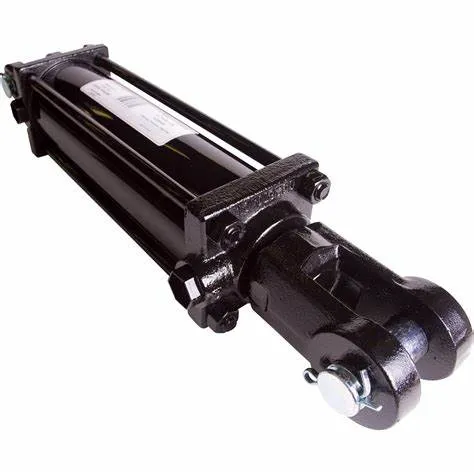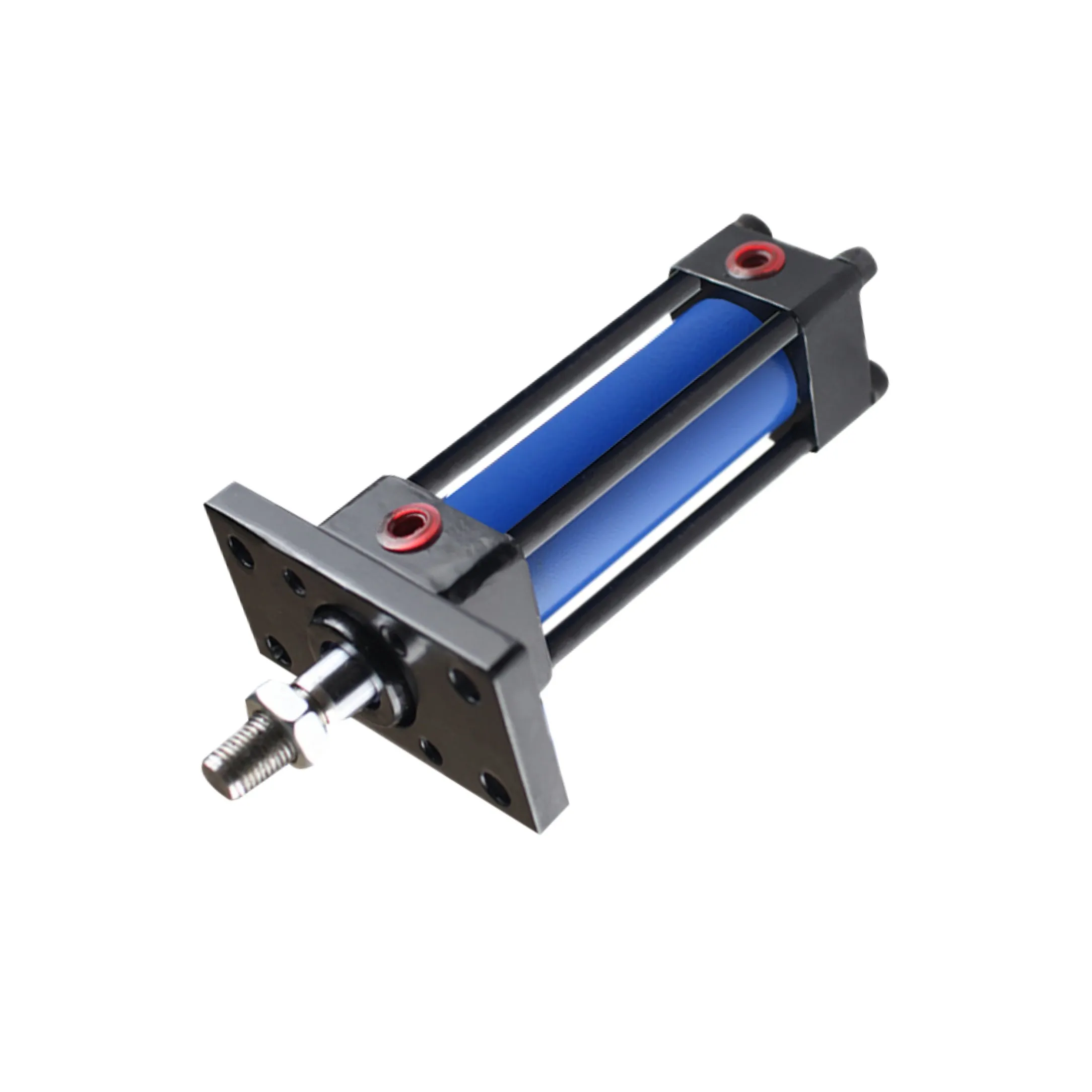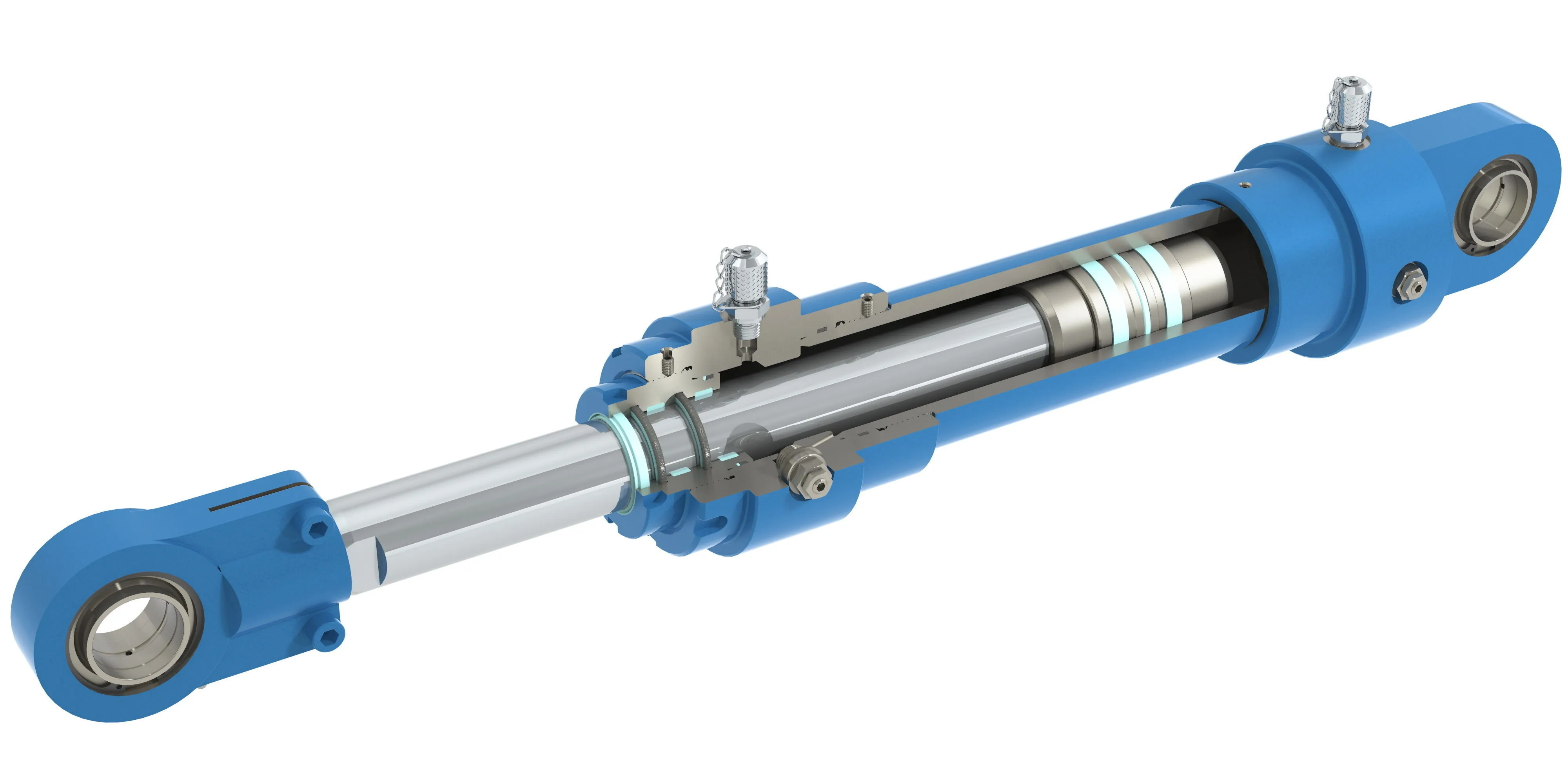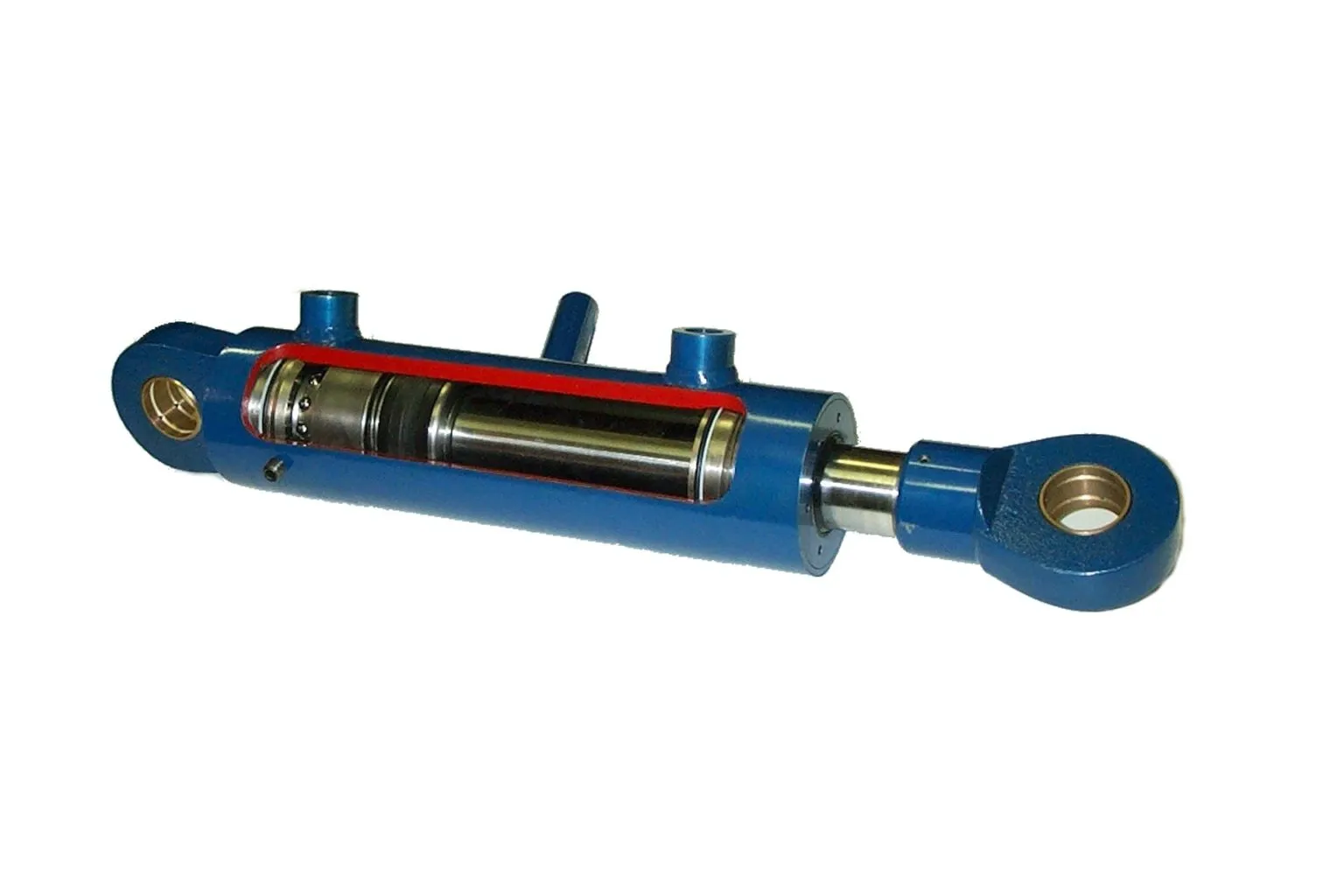The Ultimate Guide to Locking Single-Acting Hydraulic Cylinders
Introduction to Locking Single-Acting Hydraulic Cylinders
The locking single-acting hydraulic cylinder is a crucial component in hydraulic systems that operates under hydraulic pressure in one direction and has a locking function to prevent movement in the absence of pressure. The design and construction characteristics of these cylinders are essential in various industrial applications.
Locking Mechanism – Safety
The main feature of the locking single-acting hydraulic cylinder is its locking mechanism, which ensures that the piston stays in a safe position when hydraulic pressure is lost, preventing accidental retracting. This mechanism can be either a mechanical lock or a hydraulic lock.

Variety
The design of the locking mechanism can be customized to suit specific application needs, such as using spring-loaded locking devices, pin locks, or other forms of mechanical locks.
Compact Structure – Space Optimization
Locking single-acting hydraulic cylinders are designed to be compact, making them ideal for use in space-limited environments. They are suitable for a wide range of equipment and machinery.
Precision Manufacturing – High-Precision Machining
These cylinders require high processing accuracy to ensure good fit and sealing performance, thus avoiding leakage. Strict quality control measures are implemented during the production process to ensure the reliability of each component.
Assembly Process – Specialized Assembly
Professional technicians are needed to ensure the correct installation and calibration of individual components. After assembly, the hydraulic cylinder undergoes a pressure test to confirm its performance and tightness.
Working Principle of Locking Single-Acting Hydraulic Cylinders
The locking single-acting hydraulic cylinder operates on a single-acting mechanism. When hydraulic oil is pumped into the chamber, the cylinder extends and pushes the piston outward. The retraction is prevented by a locking mechanism that holds the piston in place even when hydraulic pressure is lost.
Locking Mechanism
The locking function can be mechanical (such as a pin or latch) or hydraulic (maintaining pressure in a specific chamber), ensuring that the load remains safe even if the hydraulic system loses pressure.
Types and Configurations of Locking Single-Acting Hydraulic Cylinders
There are three main types of locking single-acting hydraulic cylinders, each with unique configurations tailored to specific applications. These cylinders offer versatility and reliability in various industrial settings.
Split Introduction
For each type of locking single-acting hydraulic cylinder, a detailed description is provided to highlight its key features and advantages.
Benefits of Locking Single-Acting Hydraulic Cylinders
Locking single-acting hydraulic cylinders offer several advantages that make them a preferred choice in many applications. These benefits include enhanced security, reliability, and simplicity, among others.
Enhanced Security
The locking feature greatly reduces the risk of accidental retractions, ensuring operator safety in demanding working environments.
Reliability
These cylinders are designed to operate effectively under high loads and varying environmental conditions, ensuring consistent performance and minimal downtime.
Simplicity
Locking single-acting hydraulic cylinders are easy to operate and maintain, making them a user-friendly choice for a wide range of applications.
Application Scenarios of Locking Single-Acting Hydraulic Cylinders
Locking single-acting hydraulic cylinders find applications in various industries, including construction equipment, manufacturing, transportation, and aviation. These cylinders play a crucial role in ensuring safety and efficiency in different operational environments.
Construction Equipment
They are commonly used in cranes, hoists, and lifts to securely hold heavy objects in place during lifting and lowering operations.
Manufacturing
In manufacturing processes, these cylinders are utilized in presses to form materials under high pressure and maintain position during processing.
Transportation
Stabilizers and jacks in vehicles use locking single-acting hydraulic cylinders to ensure safety during maintenance or transportation activities.
Aviation
For aircraft landing gear systems, these cylinders are essential for securing the landing gear in the appropriate position during takeoff and landing.
Design Considerations and Selection Criteria for Locking Single-Acting Hydraulic Cylinders
When choosing a locking single-acting hydraulic cylinder, several design considerations and selection criteria need to be taken into account to ensure optimal performance and durability.
Exploring the Bearing Capacity
Understanding the load-bearing capacity of the cylinder is crucial to determine its suitability for a specific application.
Sealing and Durability
The use of high-quality seals and durable materials is essential to maintain the integrity and performance of the cylinder under varying operating conditions.
Safety and Maintainability
Ensuring the safety of the hydraulic system and ease of maintenance are key factors to consider when selecting a locking single-acting hydraulic cylinder.
Sealing and Lubrication of Locking Single-Acting Hydraulic Cylinders
Proper sealing and lubrication are vital for the efficient operation and longevity of locking single-acting hydraulic cylinders. Various seals and lubricants are used to enhance performance and reduce wear and tear.
Seal Materials
Piston seals, rod seals, and other wear-resistant materials are used to prevent leakage and maintain sealing integrity. The surface of the cylinder is treated to improve wear resistance.
Lubrication
Regularly filling the cylinder with the appropriate amount of hydraulic oil is necessary to ensure smooth operation and prevent component damage.
Regular Inspection and Preventive Maintenance
Implementing regular inspection and preventive maintenance measures is essential to prolong the service life and efficiency of locking single-acting hydraulic cylinders. By following these guidelines, potential issues can be identified and addressed promptly.
Inspection
Regularly inspecting the cylinder for signs of wear, damage, or leaks can help prevent unexpected failures and ensure optimal performance.
Preventive Maintenance
Taking proactive measures such as lubrication, seal replacement, and calibration inspection can help maintain the cylinder’s functionality and reliability over time.
Correct Installation Guide for Locking Single-Acting Hydraulic Cylinders
Proper installation of locking single-acting hydraulic cylinders is crucial for optimal performance and safety. Following the correct installation guide ensures that the cylinder operates efficiently and reliably in various applications.

Installation Steps
Step-by-step instructions on how to install the cylinder correctly, including alignment, mounting, and testing procedures, are essential to ensure proper functionality.

Maintenance Tasks for Locking Single-Acting Hydraulic Cylinders
Implementing routine maintenance tasks is essential to extend the service life and performance of locking single-acting hydraulic cylinders. By following these maintenance guidelines, potential issues can be mitigated, and the cylinder’s efficiency can be optimized.
Regular Inspection
Regularly inspecting the cylinder for wear, leaks, and other signs of damage can help prevent costly repairs and downtime.
Proper Lubrication
Ensuring the cylinder is adequately lubricated with the recommended hydraulic oil can prevent premature wear and extend its operational lifespan.
Seal Replacement and Calibration Inspection
Replacing worn seals and conducting calibration inspections at regular intervals can help maintain the cylinder’s sealing integrity and operational efficiency.
Safety Considerations and Environmental Factors
Adhering to safety measures and considering environmental factors are crucial when using locking single-acting hydraulic cylinders. By prioritizing safety and environmental protection, potential risks can be minimized, and operational efficiency can be enhanced.
Fault Diagnosis and Common Problems
Understanding common faults and diagnosing issues promptly is essential for maintaining the performance and reliability of locking single-acting hydraulic cylinders. By identifying and addressing common problems, downtime and costly repairs can be minimized.
Unit Power of Locking Single-Acting Hydraulic Cylinders
The unit power of locking single-acting hydraulic cylinders plays a vital role in determining their performance and efficiency in hydraulic systems. Several factors, such as cylinder diameter, stroke, operating pressure, piston speed, and load, influence the unit power output.
Cylinder Diameter and Stroke
A larger cylinder diameter and appropriate stroke length can increase the applied force and power output of the hydraulic cylinder.
Operating Pressure
The operating pressure of the hydraulic system affects the unit power output, but safety considerations must be prioritized to avoid system failure.
Piston Speed and Load
The speed at which the piston moves and the load conditions influence the power calculation and overall performance of the hydraulic system.
Advantages of Optimizing Locking Single-Acting Hydraulic Power Unit
Optimizing the power unit of locking single-acting hydraulic cylinders can yield significant benefits, including improved efficiency, energy savings, and enhanced reliability. By maximizing the power output, operational efficiency and equipment performance can be enhanced.
Improve Efficiency
Higher power output results in shorter operation times and increased production capacity, improving overall efficiency and productivity.
Energy Saving
By optimizing design and operation, energy consumption can be reduced, leading to cost savings and environmental benefits.
Enhance Reliability
Effective power management can prolong the service life of equipment, reduce the risk of failures, and enhance overall reliability in industrial applications.
Frequently Asked Questions About Locking Single-Acting Hydraulic Cylinders
Q: How does the locking mechanism in a single-acting hydraulic cylinder work?
The locking mechanism in a single-acting hydraulic cylinder prevents the piston from retracting under load by utilizing a mechanical or hydraulic lock, ensuring safety and stability in hydraulic systems.

Q: What are the main components of a locking single-acting hydraulic cylinder?
The main components of a locking single-acting hydraulic cylinder include the cylinder barrel, piston, seals, locking mechanism, and hydraulic connections, each playing a crucial role in its operation.
Q: What advantages do locking single-acting hydraulic cylinders offer over standard single-acting cylinders?
Locking single-acting hydraulic cylinders provide enhanced safety features, reliability, and stability by preventing accidental retractions and ensuring load security even in the absence of hydraulic pressure.
Long-Tail Keywords for Locking Single-Acting Hydraulic Cylinders
- High-Precision Locking Mechanism for Hydraulic Systems
- Customized Locking Single-Acting Cylinders for Industrial Applications
- Enhanced Safety Features in Locking Hydraulic Cylinder Designs
Our Company
We are a leading hydraulic cylinder replacement manufacturer, offering a diverse product line and customized services for domestic and international markets. With professional expertise, international certifications, and exceptional after-sales support, we strive to provide high-quality hydraulic solutions for industrial applications.
Professional Services
Our company delivers professional services tailored to meet the unique needs of our customers, ensuring optimal performance and reliability in hydraulic systems.
International Certification
We have obtained international certifications to guarantee the quality and safety of our products, adhering to industry standards and regulations for hydraulic components.
Customized Solutions
Our team offers customized solutions to accommodate specific requirements and applications, providing innovative designs and tailored hydraulic solutions for diverse industrial sectors.
Production Equipment
We utilize advanced production equipment and technologies to manufacture high-quality hydraulic cylinders, ensuring precision machining and reliable performance for our customers.
After-Sales Service
Our commitment to excellent after-sales service includes technical support, maintenance advice, and replacement parts availability, ensuring long-lasting performance and customer satisfaction.
